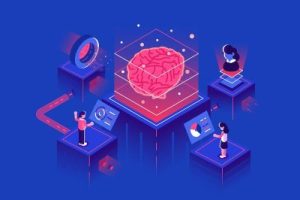 The National Defense Strategy (NDS) sets the strategic direction for our military to meet the security threats of tomorrow. Overall, the Defense Strategy focuses on China and Russia as the primary adversaries, but it also emphasizes the importance of global cooperation among allies as well as adversaries to meet threats that are bigger than any one country including climate change, food insecurity, and pandemics. The defense strategy lays out three primary tactics for advancing U.S. and global security.
The National Defense Strategy (NDS) sets the strategic direction for our military to meet the security threats of tomorrow. Overall, the Defense Strategy focuses on China and Russia as the primary adversaries, but it also emphasizes the importance of global cooperation among allies as well as adversaries to meet threats that are bigger than any one country including climate change, food insecurity, and pandemics. The defense strategy lays out three primary tactics for advancing U.S. and global security.
Integrated Deterrence
The practice of integrated deterrence involves working closely across all branches of the military, warfighting domains, and even across other federal entities to ensure national security. It expands responsibility for deterring adversaries beyond the Department of Defense (DoD), involving the intelligence community, health agencies, environmental agencies, and more. Continue reading

 Machine Learning (ML) and other aspects of Artificial Intelligence (AI) are becoming a critical part of government modernization plans. The fear that "machines will replace people" has largely disappeared. In fact, people see the benefit that ML provides for human workers. ML technology allows machines to do what they are best at - fast computation of large data sets - freeing up humans to do what they do best - analyzing and making sense of the data produced.
Machine Learning (ML) and other aspects of Artificial Intelligence (AI) are becoming a critical part of government modernization plans. The fear that "machines will replace people" has largely disappeared. In fact, people see the benefit that ML provides for human workers. ML technology allows machines to do what they are best at - fast computation of large data sets - freeing up humans to do what they do best - analyzing and making sense of the data produced. Artificial Intelligence (AI) is becoming a key tool in the arsenal of the U.S. military. In 2022, the Department of Defense (DoD) launched the
Artificial Intelligence (AI) is becoming a key tool in the arsenal of the U.S. military. In 2022, the Department of Defense (DoD) launched the  In-person events are back in force, but we're all a little rusty at networking. Anyone who has attended an in-person event recently has likely had the conversation with fellow attendees, "Wow, I'm not sure how to do this anymore." To help us all get back in our groove, we wanted to pull together a list of tried and true as well as some new tips to make your attendance at the next government networking event feel a bit more natural.
In-person events are back in force, but we're all a little rusty at networking. Anyone who has attended an in-person event recently has likely had the conversation with fellow attendees, "Wow, I'm not sure how to do this anymore." To help us all get back in our groove, we wanted to pull together a list of tried and true as well as some new tips to make your attendance at the next government networking event feel a bit more natural. The term "software factories" conjures up images of pristinely clean technology assembly lines with super-efficient singularly focused line workers. In reality, a software factory is not a place, but rather a process for improving the speed of software development and release. A software factory provides a repeatable,
The term "software factories" conjures up images of pristinely clean technology assembly lines with super-efficient singularly focused line workers. In reality, a software factory is not a place, but rather a process for improving the speed of software development and release. A software factory provides a repeatable, 
